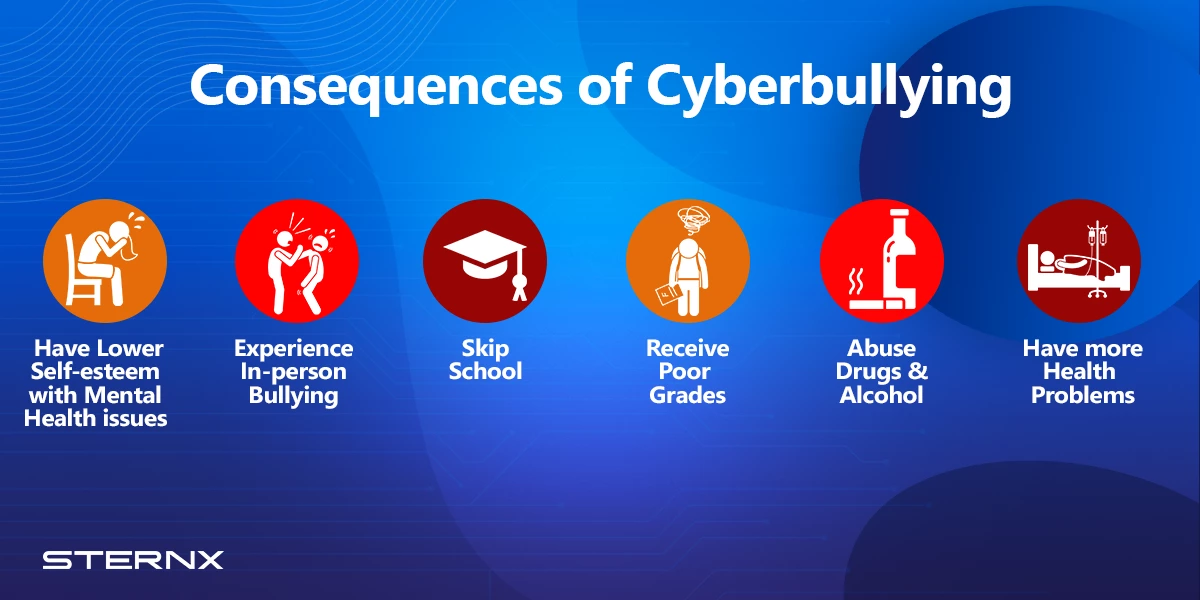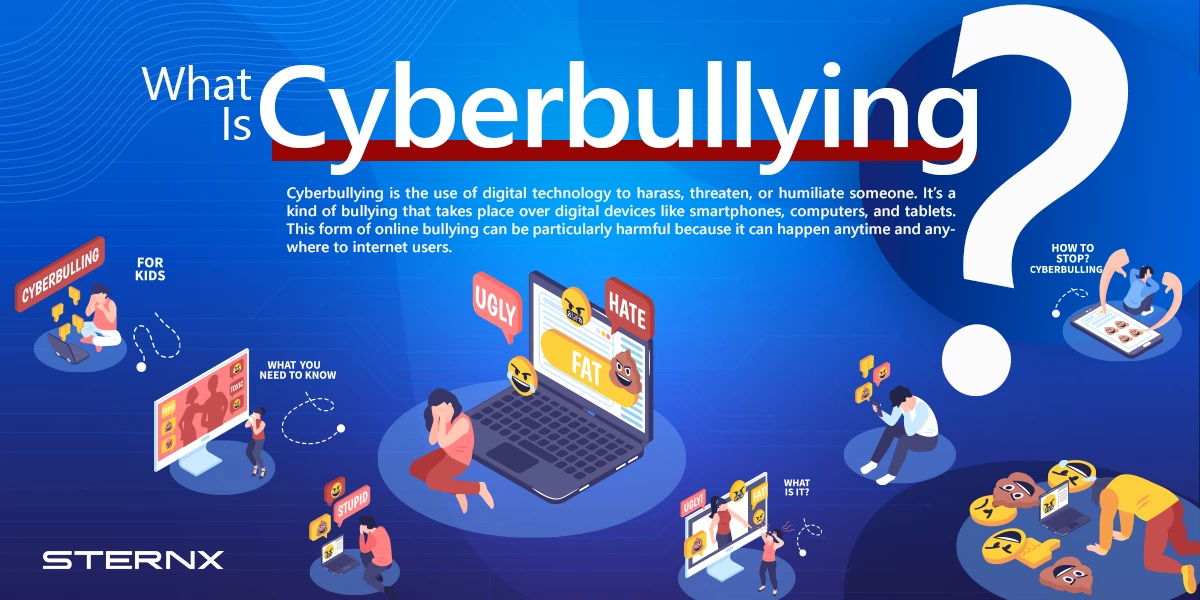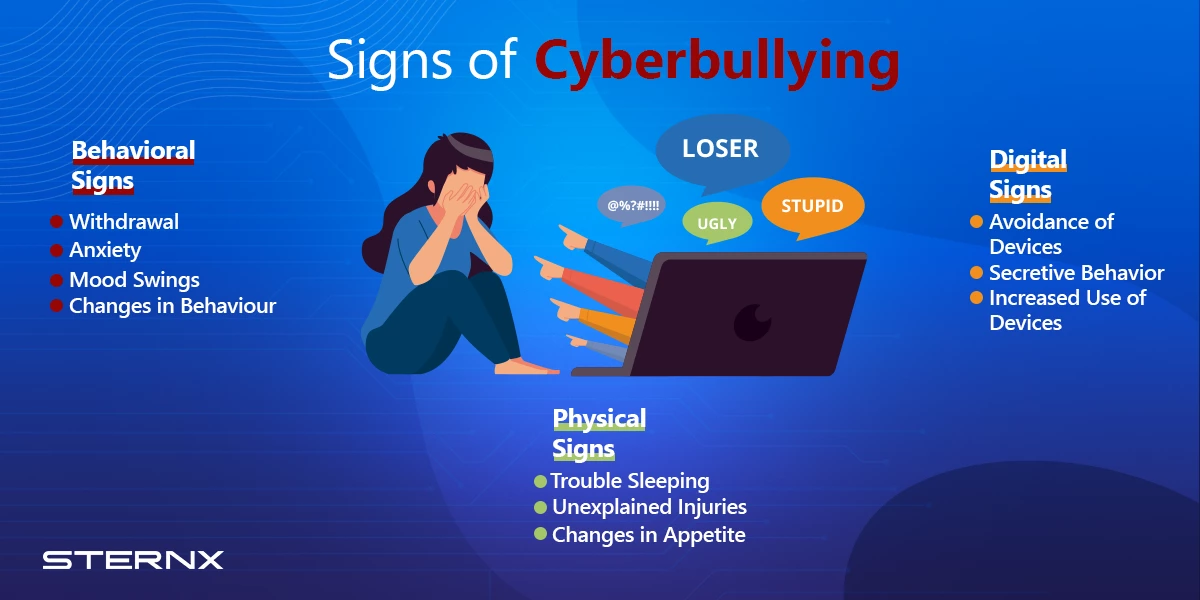Table of Contents
Cyberbullying is a modern issue where technology is used to harass, embarrass, or target someone. It can occur on social media, through text messages, or even in online games. It’s a persistent problem that invades the personal space of children and teens.
Families need to do everything they can to address cyberbullying. It’s their mission to create a safe environment where children feel comfortable sharing their online experiences. Parents need to stay informed and vigilant, as this issue can deeply affect a child’s mental health and emotional well-being. Open communication within the family is key to tackling this challenge effectively.
In this guide, we’ll explore how to recognize the signs of cyberbullying, strategies on how to prevent cyberbullying, and practical steps to support your child if they’ve experience cyberbullying. Understanding these aspects will empower you to create a safer online environment for your kids.
What Is Cyberbullying?
Cyberbullying is the use of digital technology to harass, threaten, or humiliate someone. It’s a kind of bullying that takes place over digital devices like smartphones, computers, and tablets. This form of online bullying can be particularly harmful because it can happen anytime and anywhere to internet users.
Cyberbullying commonly occurs on social media platforms like TikTok, Instagram, and Twitter. Messaging apps such as WhatsApp and Snapchat are also frequent hotspots. Online gaming environments can be breeding grounds for this toxic behavior, where anonymity encourages bullies to act out without fear of repercussions.
Cyberbullying behaviors include sending mean texts or emails, spreading rumors online, or posting hurtful comments on social media. It can also involve impersonating someone to harm their reputation or sharing private information to embarrass them. These actions can lead to severe emotional distress for the victims.
The effects of cyberbullying can be devastating. Victims may experience anxiety, depression, and a drop in academic performance. The anonymity of the internet can make bullying relentless, leaving children feeling helpless. Understanding these behaviors is necessary for parents to recognize and address cyberbullying effectively.
Cyberbullying vs. Bullying
Cyberbullying involves using digital platforms to harass or harm others, while traditional bullying occurs face-to-face. The internet provides bullies with an anonymous shield, making it harder to identify them compared to traditional bullying where the aggressor is usually known.
Furthermore, cyberbullying can happen 24/7, following the victim even into their home. Traditional bullying is often confined to specific locations and times, such as during school hours. This constant online presence means victims of cyberbullying feel there’s no escape, intensifying their distress.
The internet’s reach also allows harmful content to go viral quickly and make the situation worse for the victim. For instance, a derogatory post or video can be shared with a wide audience instantly, making the impact of cyberbullying potentially more severe than traditional bullying, which typically has a smaller, immediate audience.
Studies show that approximately 34% of students have experienced cyberbullying in their lifetime, while 73% have faced traditional bullying at some point. Both forms of bullying are significant, but the unique challenges posed by cyberbullying, such as anonymity and the permanence of online content, require special attention from parents and educators.
What Causes Cyberbullying?
Peer pressure plays a significant role in cyberbullying behavior. Teens often engage in bullying to fit in with a particular group or to gain social status. The anonymity provided by the internet makes it easier for bullies to act without fear of being caught or facing immediate consequences.
The lack of immediate consequences for online actions contributes to cyberbullying. Unlike face-to-face interactions, the digital world allows bullies to say things they might not say in person. This perceived internet safety makes engaging in harmful behaviors more alluring for cyberbullies.
Online culture can also exacerbate cyberbullying. The competitive nature of social media, where likes and shares are currency, can encourage negative behavior. Group dynamics online often lead to mob mentality, where individuals join in bullying without considering the impact on the victim.
Media and entertainment often glorify aggressive behavior, subtly endorsing bullying. Shows and movies that depict characters gaining popularity through intimidation can influence young people. This normalization of bullying behavior in the media can make it seem acceptable or even desirable.
Signs of Cyberbullying
Recognizing the signs of cyberbullying early can help a lot. Families should promote open communication. They also need to provide a supportive environment where children feel safe discussing their online experiences, so they can help mitigate the impact of cyberbullying. Let’s look at some important signs that show your child has been a target of cyberbullying.
Behavioral Signs
- Withdrawal: A child who was once outgoing may become withdrawn and avoid social interactions and activities they previously enjoyed.
- Anxiety: Increased levels of anxiety, particularly related to going to school or using the internet, can be a possible red flag.
- Mood Swings: Sudden changes in mood, such as irritability, sadness, or anger, without clear reasons.
- Changes in Behavior: Noticeable changes in behavior, such as becoming secretive, overly defensive, or displaying outbursts.
Digital Signs
- Avoidance of Devices: A sudden reluctance to use their phone for social media site, computer, or other devices can indicate they are trying to avoid negative interactions online.
- Secretive Behavior: Being secretive about their online activities, such as quickly closing tabs or hiding their screen when someone walks by.
- Increased Use of Devices: Alternatively, they might spend significantly more time on their devices, possibly trying to manage or respond to bullying.
Physical Signs
- Trouble Sleeping: Difficulty falling asleep or staying asleep, along with frequent nightmares, can be physical manifestations of the stress caused by cyber bullying.
- Unexplained Injuries: While less common, some children might self-harm as a way to cope with the emotional pain of being bullied online.
- Changes in Appetite: Significant changes in eating habits, whether an increase or decrease in appetite, can be a response to stress and anxiety.

Consequences of Cyberbullying
Cyberbullying can lead to significant emotional distress for victims. Short-term effects include feelings of sadness, anxiety, and fear. Long-term effects can be more severe, potentially leading to depression and other mental health issues. These emotional burdens often impact academic performance, as affected students may struggle to concentrate or participate in school activities.
The mental health issues stemming from cyber bullying are nothing to ignore. Victims may experience ongoing anxiety, low self-esteem, and even suicidal thoughts. The persistent nature of online harassment can worsen these issues, making recovery a challenging process. It’s necessary for parents to recognize these signs early and seek professional help when needed.
Conversely, perpetrators of cyberbullying can face serious legal consequences. Many regions have laws against cyberbullying, and offenders can be charged with harassment, defamation, or even criminal charges depending on the severity of their actions. These legal repercussions can have lasting effects on a young person’s record and future opportunities.
In addition to legal consequences, schools often impose disciplinary actions on students involved in cyberbullying. These can range from suspension to expulsion, significantly affecting the perpetrator’s educational path. Schools aim to create a safe environment for all students, and taking a strong stance against bullying is a part of that commitment.
How to Stop Cyberbullying
According to StopBullying.gov, these are the steps parents should take to intervene and respond to cyberbullies when it comes to stopping cyberbullying:
Listen and Document: Start by listening to your child’s concerns without judgment. Document incidents by taking screenshots and saving messages. This evidence is crucial when reporting the behavior to authorities or school officials.
Report and Support: Report the cyberbullying to the relevant social media platforms, school authorities, and, if necessary, the police. Make sure to offer continuous support to your child throughout this process.
Communication: Create an environment where your child feels comfortable discussing their online experiences. Regularly discussing about their digital life, ensuring they can approach you with any issue. Building trust is key to identifying and addressing problems early on.
Collaborating: Collaborate with your child’s school to ensure they are aware of the situation and can provide support. Many schools have policies and resources to combat cyberbullying. Additionally, leverage tools provided by online platforms to block, report, and remove harmful content.
SternX: Your Partner in Online Safety
At SternX, your parental control app software provider, offer a comprehensive suite of tools and services to ensure the online safety of children. Our “Safes” parental control app empowers parents to set screen time limits, block inappropriate websites, and monitor social media account activities on popular apps like Instagram and TikTok on your child’s device. With real-time location tracking and detailed activity reports, parents can stay informed about their child’s online interactions and ensure they stay safe online.
Conclusion
Cyberbullying is a pervasive issue affecting many children and teens. By recognizing its signs and knowing how to prevent and address it, parents can create a safer online environment for their children. Using tools like SternX’s monitoring and educational resources can significantly enhance online safety.
Parents and caregivers must take charge when it comes to cyberbullying. Regular communication and monitoring online activities are essential steps. Stay informed and involved in your child’s digital life to ensure they navigate the online world safely and confidently.

